Air Pollution

Photo credit: www.pexels.com
Guide Index
- Introduction
- Books
- Ebooks
- Journal Articles
- Websites
- Videos
- Accessing National Library Board Singapore Resources
- Authors
Introduction
Air pollution is the accumulation in the atmosphere of substances that, in sufficient concentrations, degrade ecosystems, damage buildings and endanger human health. Most air pollution is caused by human activities, but there are some natural sources of air pollution such as wildfires or volcanic ash.1
Some common air pollutants are soot, smoke, mold, pollen, methane and carbon dioxide. These can reach harmful concentrations both indoors and outdoors. Tiny particles smaller than 10 micrometers (classified as PM10 and PM2.5) can even be breathed into our lungs and into our bloodstream. Air pollution has caused an estimated 4.2 million premature deaths in 2016, about 90% of them in low- and middle-income countries.2 Air pollution has been linked to higher rates of cancer, heart disease, stroke, and other respiratory diseases.
Beyond individual health, air pollution is known to have direct impacts on our environment. Climate change, global warming, ozone layer depletion, smog and acid rain are some effects of air pollution. Singapore has encountered situations with heavy haze in the past as well.
Internationally, countries have begun working together to reduce air pollution and improve air quality worldwide. Renewable energy and zero-emission alternatives to vehicles and machines are being developed and implemented. Governments have also made commitments to limit emissions of carbon dioxide and greenhouse gases, through agreements such as the Paris Agreement and the Kigali Agreement.3
This guide highlights resources on air pollution and haze that are available at the Lee Kong Chian Reference Library as well as on the Internet. As the guide is not intended to be comprehensive, interested readers should search the NLB catalogue or the Internet for more resources.
| Search Terms | Call Numbers |
| Intergovernmental cooperation (Southeast Asia), Southeast Asia Environmental conditions | 341.2473 |
| Forest fires (Environmental aspects), Forest fires (Research), Smaze (Environmental aspects), Smaze (Research), Forest ecology | 363.379 |
| Air Pollution | 363.7 |
| Forest fires (Southeast Asia, Prevention and control), Forests and forestry, Fire management (Southeast Asia) | 634.9618 |
Books
(listed in alphabetical order)
Air Pollution: health and environmental impacts
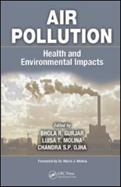
Bhola R. G., et al. (Eds.). (2010). Air Pollution: health and environmental impacts. Boca Raton, Fla.: CRC Press.
Call Number: R 363.7392 AIR
The book examines the effect of air pollution on human health and the environment in different settings around the world. It not only covers general modeling, monitoring, and characterization techniques but also includes field studies and cases that offer valuable insight into region-specific issues.
Clearing the air: The beginning and the end of air pollution
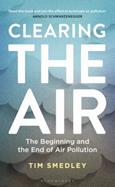
Smedly, T. (2019). Clearing the air: The beginning and the end of air pollution. London: Bloomsbury Sigma.
Call number: 363.7392 SME
Sustainability journalist Tim Smedley explores what air pollution is, how it is harmful, where they come from and which cities are battling it. The book also explores some possible solutions to the problem.
Encyclopedia of global warming & climate change. (vols.1-3)
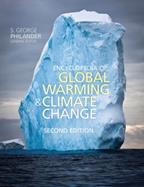
Philander, S. G. (Ed.). (2012). Encyclopedia of global warming & climate change. Thousand Oaks, Calif.: SAGE Publications, Inc.
Call Number: R 363.7387403 ENC
Philander explores and explains the importance of global warming and climate change and the effects of human activity and greenhouse gases around the world.
Environmental Science

Chiras, Daniel D. (2010). 8th ed. Environmental Science. 8th ed. Sudbury, Mass.; Singapore: Jones and Bartlett Publishers.
Call Number: R 363.7 CHI
This book discusses environmental issues such as preserving biological diversity, energy conservation and consumption and environmental protection policies.
Every breath you take: A user’s guide to the atmosphere

Broomfield, M. (2019). Every breath you take: A user’s guide to the atmosphere. London: Duckworth.
Call Number: 363.7392 BRO
Air quality specialist Dr Mark Broomfield combines scientific evidence with personal anecdotes to advise you on what can be done to improve air quality. This book provides information about air quality, from the atmosphere all the way down to your lungs.
The great smog of China : a short event history of air pollution
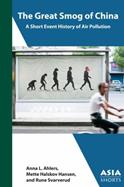
Ahlers, A. L., Hansen, M. H., & Svarverud, R. (2020). The great smog of China : a short event history of air pollution. Ann Arbor, MI: Association for Asian Studies, Inc.
Call number: 363.7392 AHL
This book traces the history or air pollution in China over more than 2000 years, how they have been communicated and their impact on society.
Handbook of environment and waste management. [Volume 1], Air and water pollution
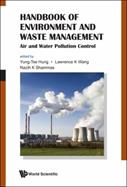
Hung, Y., et. al. (Eds.). (2012). Handbook of environment and waste management. [Volume 1], Air and water pollution control Hackensack, NJ: World Scientific.
Call Number: R 363.73926 HAN
Chapters 1-4 of this volume address air pollution problems and control measures that include air quality modelling and prediction and air bio-filtration for odour treatment.
How much is clean air worth?: Calculating the benefits of pollution control
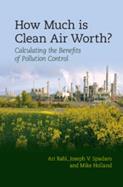
Rabl, Ari. [et al.]. (2014). How much is clean air worth? : Calculating the benefits of pollution control. Cambridge, United Kingdom: Cambridge University Press.
Call Number: 363.7392 RAB
The book offers an overview of the core methodologies and tools used to quantify the impacts and damage costs of pollution.
The invisible killer: The rising global threat of air pollution - and how we can fight back

Fuller, G. (2019). The invisible killer: The rising global threat of air pollution - and how we can fight back. London: Melville House UK.
Call number: 363.7392 FUL
Air pollution scientist Gary Fuller explores particle pollution, delving into the science and research of air pollution dating as far back as the 17th century up until today.
Pollution across borders: Transboundary fire, smoke and haze in Southeast Asia
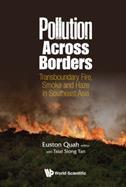
Quah, E. & Tan, T.S. (2018). Pollution across borders: Transboundary fire, smoke and haze in Southeast Asia. Singapore ; Hackensack, NJ : World Scientific Publishing Co. Pte. Ltd.
Call number: 363.73870959 POL
Experts from various fields discuss the recurring haze problem in Southeast Asia, covering its causes, perpetrators & victims, costs & impacts, potential solutions & their effectiveness, and prospects of resolving the pollution.
Ebooks
(listed in alphabetical order)
Air pollution: Monitoring quantification and removal of gases and particles.
Olvera, J. D. R. (Ed.). (2019). Air pollution: Monitoring quantification and removal of gases and particles. London: IntechOpen. Retrieved January 8, 2020, from https://www.intechopen.com/
This book provides an in-depth review of different environmental aspects on monitoring, quantification and elimination of emissions to the atmosphere, generated by diverse anthropogenic activities in large cities.
Atmospheric air pollution and monitoring
Lakhouit, A. (Ed.). (2020). Atmospheric air pollution and monitoring. London: IntechOpen. Retrieved January 8, 2020, from https://www.intechopen.com/
This book provides studies on atmospheric air pollution and presents methods to reduce its impacts on human health. Tools for measuring IAQ are discussed as well as analysis of indoor air quality in closed buildings.
Environmental emissions
Viskup, R. (Ed.). (2021). Environmental emissions. London: IntechOpen. Retrieved January 8, 2020, from https://www.intechopen.com/
This book presents new research and findings related to environmental emissions, pollution, and future sustainability. Chapters cover health effects, emission monitoring and mitigation, and emission composition and measurement.
Non-exhaust emissions: An urban air quality problem for public health; impact and mitigation measures
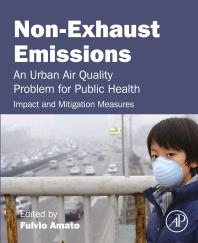
Amato, F. (2018). Non-exhaust emissions: An urban air quality problem for public health; impact and mitigation measures. Elsevier Science & Technology. Retrieved from Proquest Ebook Central. (myLibrary ID is required to access the e-book)
A significant part of emissions are generated from non-exhaust sources, such as road dust and tire wear. This book explores the nature of this specific type of particulate matter and their impact on public health, defining the current knowledge, gaps, and future needs.
Journal Articles
(myLibrary ID is required to access the journal articles from NLB’s eresources website)
Experience from Integrated Air Quality Management in the Mexico City Metropolitan Area and Singapore
Molina, L. T., Velasco, E., Retama, A., & Zavala, M. (2019). Experience from Integrated Air Quality Management in the Mexico City Metropolitan Area and Singapore. Atmosphere, 10(9). Retrieved 2021, February 23, from Proquest Central via NLB’s eResources website.
This article reviews the air quality and compares the policies implemented in both the Mexico City Metropolitan Area (MCMA) and Singapore. While differences in the governance, economics, and culture of the two cities influence the decision-making process, both have made progress in reducing concentrations of harmful pollutants by implementing comprehensive integrated air quality management programs. Findings offer insights into the complexity of managing air pollution to protect public health and the environment.
Gasping for air
Gasping for air. (2019, Sep 21). The Economist, 432, 64. Retrieved 2021, February 23, from Proquest Central via NLB’s eResources website.
Haze in Indonesia and Malaysia is thought to have caused more than 200,000 respiratory infections and prompted the closure of 1,500 schools, and the thick smoke could even disrupt air traffic. Indonesia’s environment and forestry is cracking down hard on the illegal forest clearing method, but the government could be tougher yet.
Impacts of Climate Change and Air Pollution on the Tourism Industry: Evidence from Southeast Asia
Nguyen, T. G. (2019). Impacts of Climate Change and Air Pollution on the Tourism Industry: Evidence from Southeast Asia. Journal of Environmental Management & Tourism, 10(8), 1711-1722. Retrieved 2021, February 23, from Proquest Central via NLB’s eResources website.
This paper examines the effects of climate change and air pollution on the tourism industry in Southeast Asia. Findings show that air pollution has a negative effect on total tourist arrivals, with nitrous oxide emission being the key driver. These results suggest that governments may need to make critical policy decisions to weigh between short-term economic growth and long-term environmental improvement to enhance tourist destination quality in the future.
Particulate air pollution on cardiovascular mortality in the tropics: impact on the elderly
Yap, J., Ng, Y., Yeo, K. K., Sahlén, A., Lam, C. S. P., Lee, V., & Ma, S. (2019). Particulate air pollution on cardiovascular mortality in the tropics: impact on the elderly. Environmental Health: A Global Access Science Source, 18(34). Retrieved 2021, February 23, from EBSCOhost Academic Search Complete via NLB’s eResources website.
Air pollution has a significant health impact, and this study examines the health impact of air pollution, particularly among the elderly, in a tropical region. Contemporary population-based data from an equatorial country with tropical climate show that exposure to particulate air pollution was significantly associated with non-accidental mortality and cardiovascular mortality, especially in the elderly.
Southeast Asia’s transboundary haze pollution: Unravelling the inconvenient truth
Zhang, J. J., & Savage, V. R. (2019). Southeast Asia’s transboundary haze pollution: Unravelling the inconvenient truth. Asia Pacific Viewpoint, 60(3), 355–369. Retrieved 2021, February 23, from EBSCOhost Academic Search Complete via NLB’s eResources website.
This paper examines the political intricacies inherent in the management of Southeast Asia’s transboundary haze pollution. The ‘environment’ takes on different meanings at each scale, and both Indonesia and the Association of Southeast Asian Nations (ASEAN) need to recognise this in order to engage more effectively with the transboundary environmental issue. The paper calls for a greater awareness of structural weaknesses in the management of forest resources and a change in ASEAN’s environmental paradigm to a more holistic ecosystem perspective that prioritises not just environmental and human health, but also a healthy and sustainable ecosystem.
The Impacts of Air Pollution on Health and Economy in Southeast Asia
Taghizadeh-Hesary, F., & Taghizadeh-Hesary, F. (2020). The Impacts of Air Pollution on Health and Economy in Southeast Asia. Energies, 13(7), 1812. Retrieved 2021, February 23, from Proquest Central via NLB’s eResources website.
Ambient air pollution from fossil fuel use has a latent cost, that is public health issues such as respiratory diseases, lung cancer and long-term economic burdens. In Southeast Asia, lung cancer are leading causes of cancer-related deaths. This study uses 2000-2016 data for ten Southeast Asian countries to examine the possible associations between emissions, lung cancer, and the economy. Results confirm that CO2 and PM2.5 are major risk factors for lung cancer in the region. However, increased use of renewable energy and higher healthcare expenditure tends to reduce lung cancer prevalence.
The Relationship Between Air Pollution and All-Cause Mortality in Singapore
Ho, A. F. W., Zheng, H., Cheong, K. H., En, W. L., Pek, P. P., Zhao, X., Morgan, G. G., Earnest, A., Tan, B. Y. Q., Ng, Y. Y., Foo, L. L., & Ong, M. E. H. (2020). The Relationship Between Air Pollution and All-Cause Mortality in Singapore. Atmosphere, 11(1), 9. Retrieved 2021, February 23, from https://www.mdpi.com
Ambient air pollution is a risk factor for both acute and chronic diseases and poses serious health threats to the world population. This study examines the relationship between air pollution and all-cause mortality in the context of a city-state exposed to the Southeast Asian haze problem. Findings provide evidence on the general health hazard of exposure to air pollution, which can potentially guide public health policies in the region.
Urban and air pollution: a multi-city study of long-term effects of urban landscape patterns on air quality trends
Liang, L., & Gong, P. (2020). Urban and air pollution: a multi-city study of long-term effects of urban landscape patterns on air quality trends. Scientific Reports, 10(1), 1-13. Retrieved 2021, February 23, from EBSCOhost Academic Search Complete via NLB’s eResources website.
This study comprehensively examines the urban form effects on air quality in cities of different population sizes, at different developmental levels, and in different spatial layouts. The study shows that urban form changes have long-term effects on PM2.5 levels with different aspects playing larger roles for different developmental stages.
Websites
These websites provide further information on the topic of air pollution, such as air quality standards, regulations and control measures used to ameliorate this urban phenomenon.
(listed in alphabetical order)
Air pollution
World Health Organisation (WHO). (2016, January). Air pollution. Retrieved January 20, 2021, from https://www.who.int/health-topics/air-pollution
The WHO provides facts, technical information and statistics with data analysis on air pollution. 2016, January.
Air Pollution Facts, Causes and the Effects of Pollutants in the Air
Natural Resources Defence Council (NRDC). (2016, November 1). Air Pollution Facts, Causes and the Effects of Pollutants in the Air. Retrieved January 20, 2021, from https://www.nrdc.org/stories/air-pollution-everything-you-need-know
The NRDC is an environmental action organisation that tackles environmental issues through public lobbying and partners community groups and businesses to ensure the rights of all people to clean air, clean water, and healthy communities. This section of the website reports on how smog, soot, greenhouse gases, and other top air pollutants are affecting the planet and your health.
Air Pollution: Medline Plus
MedlinePlus. (2016, March 28). Air Pollution: Medline Plus. Retrieved January 20, 2021, from https://medlineplus.gov/airpollution.html
This website focuses on the health impact of air pollution, providing authoritative information from various US health associations and government organisations, including the US National Library of Medicine.
Air Topics
Environmental Protection Agency. (2020, May 15). Air Topics. Retrieved January 20, 2021, from https://www.epa.gov/environmental-topics/air-topics
This website provides information on air pollution, including air pollutants, indoor air quality, air quality management, relevant research and pertinent data.
ASEAN Agreement on Transboundary Haze Pollution
The ASEAN Secretariat, (2019). ASEAN Agreement on Transboundary Haze Pollution. Retrieved 2021, January 20 from
This is the ASEAN Agreement on Transboundary Haze Pollution, which the ASEAN countries affirmed on 10 June 2002, in order to manage transboundary haze pollution in the region.
Haze Action Online
The ASEAN Secretariat (2021). ASEAN Haze Portal . Retrieved November 27, 2024, from https://hazeportal.asean.org/
Following the ratification of the ASEAN Agreement on Transboundary Haze Pollution, this website traces the haze outlook for the ASEAN region. Media resources, guidelines, agreements and other publications regarding ASEAN provide contextual information about the region and the ASEAN countries’ participation.
Haze Information
Haze. (2021). Retrieved November 24, 2024, from National Environment Agency website https://www.haze.gov.sg/
The National Environment Agency provides an overview on the Latest Satellite Images and Regional Haze Maps.
Haze-Related Commentaries
National Environment Agency (2021). Haze-Related Commentaries. Retrieved January 20, 2021 from https://www.haze.gov.sg/haze-related-commentaries
The National Environment Agency commissioned this dedicated website in 2013 to track the air quality of the nation, provide health advisories, and collate related news and information resources regarding haze and air quality in the region.
| **NEA | Air Quality** |
| National Environment Agency (NEA) (2013). *NEA | Air Quality.* Retrieved January 20, 2021, from https://www.nea.gov.sg/our-services/pollution-control/air-pollution/air-quality |
Find out about Singapore’s air quality targets, air pollution regulations, how PSI is measured, and read FAQs on air quality and haze.
Videos
The videos selected below provide an overview of the causes of air pollution and its effects on humans and the natural environment.
(listed in alphabetical order)
| **Air Pollution 101 | National Geographic** |
| National Geographic. (2017, October 16). *Air Pollution 101 | National Geographic* [Video]. YouTube. https://www.youtube.com/watch?v=e6rglsLy1Ys |
National Geographic provides a short primer on what air pollution is and its effects on people.
Air pollution and health
World Health Organization (WHO). (2019, October 1). Air pollution and health. YouTube.
The WHO provides a playlist of videos related to air pollution, covering its health effects, actions taken by organisations and nations, and what you can do to help.
| **CNA | Talking Point | E26: Will we see an end to the haze?** |
| CNA. (2019, October 26). *CNA | Talking Point | E26: Will we see an end to the haze?* [Video]. YouTube. |
CNA discusses the forest fires in Indonesia and considers whether there will be an end to the haze
Haze in Southeast Asia
| The Straits Times. (2019, September 19). Haze in Southeast Asia | Asian Insider | The Straits Times [Video]. YouTube. |
ST’s Asian Insider explores the transboundary haze engulfing the region, discussing this recurring phenomenon and the implications for Indonesia, Malaysia and Singapore.
What to do during the haze? (English)
govsg. (2016, August 31). What to do during the haze? (English) [Video]. YouTube. {:target=”blank”}
The Singapore Government provides some useful tips and precautions to take to keep safe and healthy during any haze.
Accessing National Library Board Singapore Resources
Accessing the Print Materials
You can search the library catalogue (for physical materials) in the library and from home http://catalogue.nlb.gov.sg . The easy search function allows you to search/browse by author, title, keyword, subject and ISBN/ISSN whereas the advanced search allows you to narrow your searches to specific media types or language holdings. In both instances, you will also be able to limit your search to specific libraries by clicking on the “limit by branch” option.
To search Lee Kong Chian Reference Library’s Holdings
If you wish to search for only materials available in the Lee Kong Chian Reference Library, please always click on the “Limit by Branch” button at the bottom of the page, after you have keyed in your search term. This brings you to a new page whereby you will be able to select the library of your choice. Choose “Lee Kong Chian Reference Library” and select “yes” under the “Display only items available in the selected branch below” and then click on search.
Things to note:
Once you have identified the title that you need, please double-check the following information and write down the necessary info:
i. The “Status” of the item: the item is not available in the library, if the status displayed is “in transit”, “in process” or “not ready for loan”.
ii. Double-check that the item is in Lee Kong Chian Reference Library under “Branch”.
iii. Write down the Location Code and the Call Number of the item. This helps you to locate the item within Lee Kong Chian Reference Library. Please refer to the table below for more information (Note: Please feel free to approach the counter staff for help in locating the books.)
All featured books and periodicals are located at the Lee Kong Chian Reference Library.
Accessing the Databases
The National Library Board (NLB)’s eResources are free for all NLB members. Click here to find out how to register as a member.
If you’re having problems registering or logging in, please contact us . If you wish to find information in the databases but am not sure where to begin, or need recommendations on which databases to use, please use the “Ask A Librarian” function or send an email to ref@nlb.gov.sg for help. The librarian will get back to you within three working days.
Author
Kevin Seet
The information in this resource guide is valid as at Feb 2021 and correct as far as we are able to ascertain from our sources. It is not intended to be an exhaustive or complete history on the subject. Please contact the Library for further reading materials on the topic.
All Rights Reserved. National Library Board Singapore 2021.
-
Air pollution. (2011, April 4). National Geographic. Retrieved February 4, 2021 from https://education.nationalgeographic.org/resource/air-pollution/ ↩
-
Ambient (outdoor) air pollution. (2018, May 2). World Health Organisation. Retrieved February 4, 2021 from https://www.who.int/news-room/fact-sheets/detail/ambient-(outdoor)-air-quality-and-health ↩
-
Nunez, Christina. (2019, May 13). Carbon dioxide levels are at a record high. Here’s what you need to know. National Geographic. Retrieved February 4, 2021 from https://education.nationalgeographic.org/resource/carbon-dioxide-levels-are-record-high-heres-what-you-need-know/ ↩

